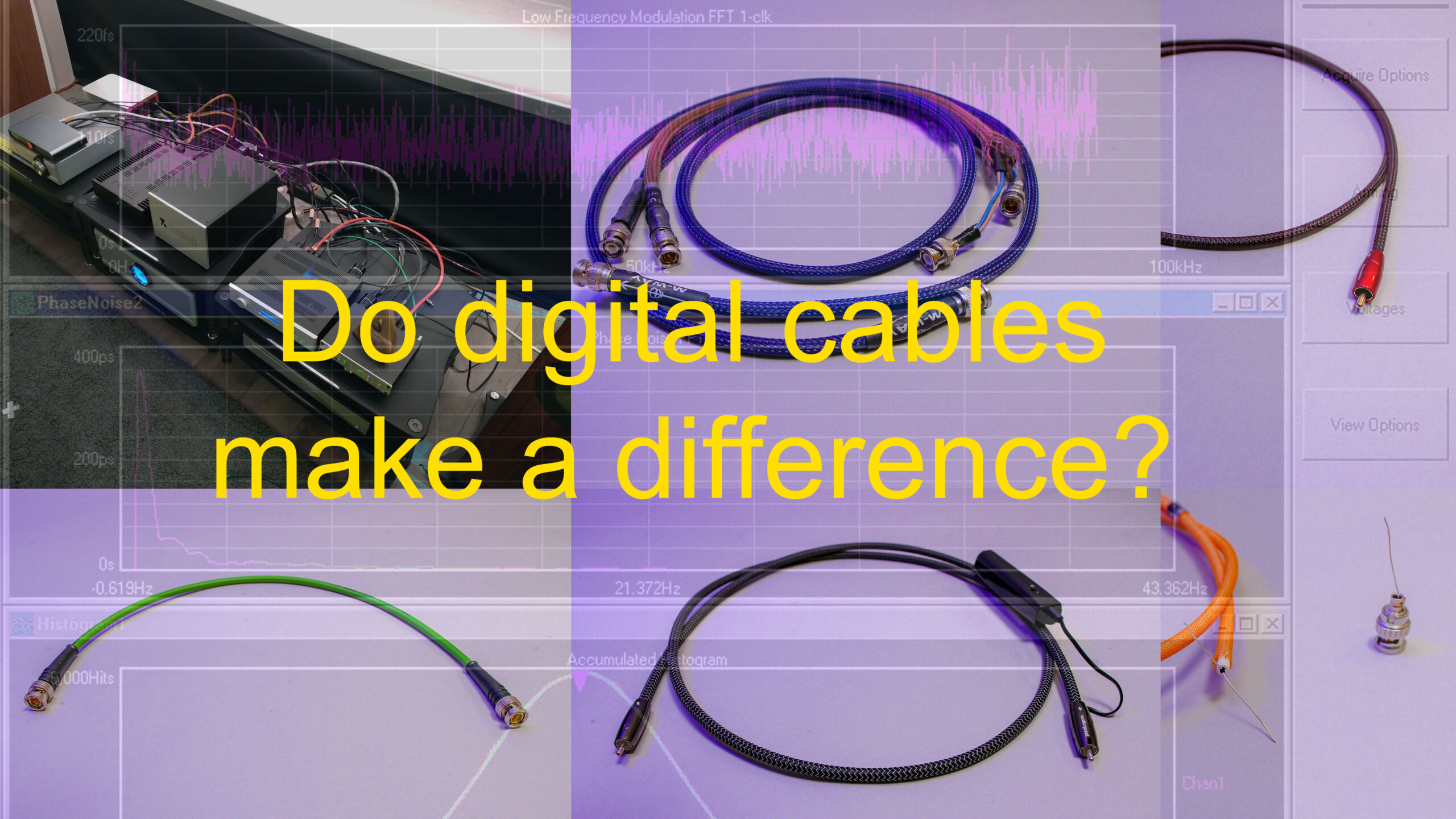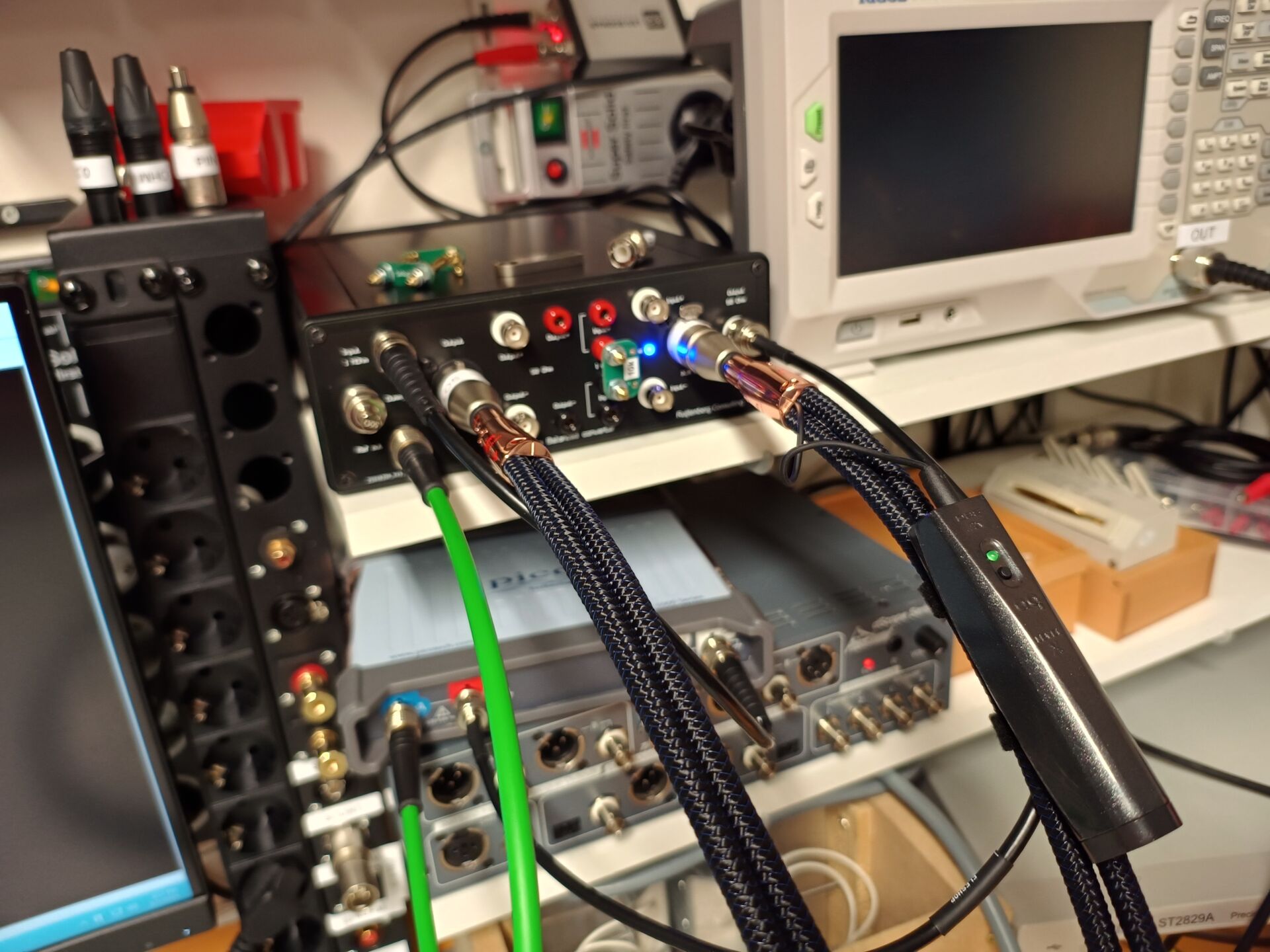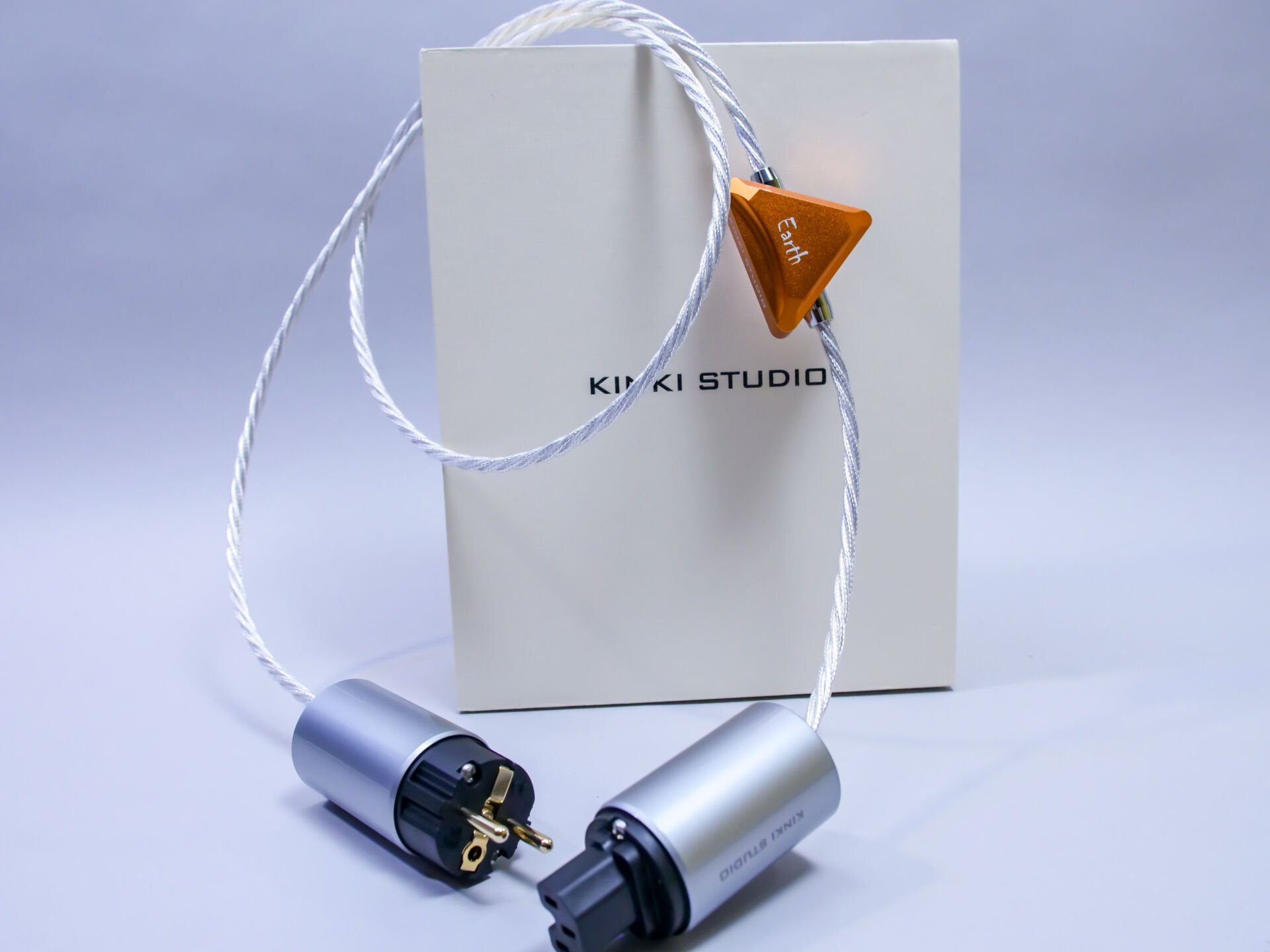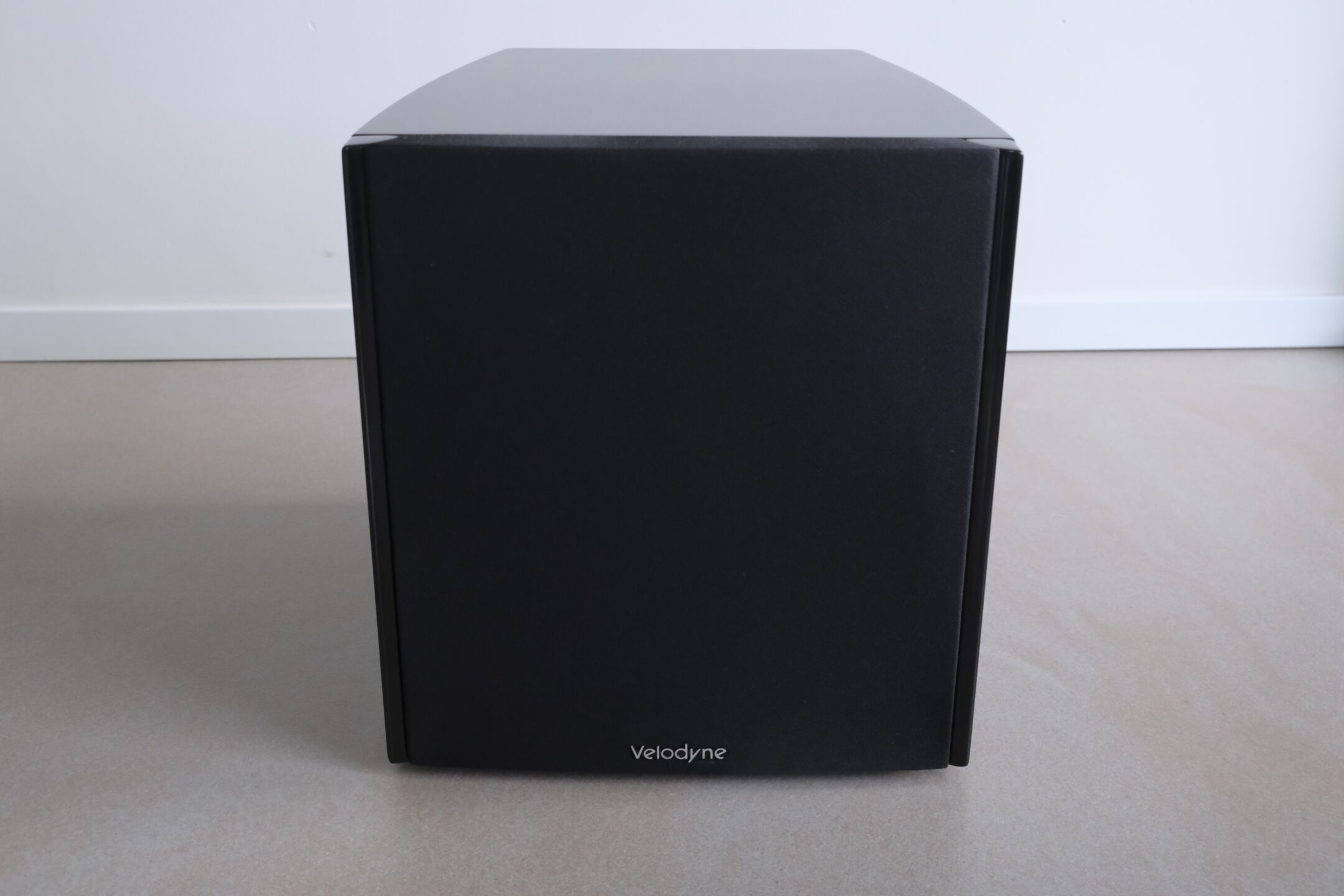

Intro
Contents
We have been trying to figure out for some time how a coaxial cable affects jitter. And whether this is audible. This is a topic that has not been discussed very often. It is often said that a coaxial, digital interlink makes no difference: the data arrives, so it can’t make a difference. Just like with streaming audio. However, we have already seen there that there is indeed a difference in performance. Will the same apply to coaxial interlinks?
This “research test” is divided into two parts: listening and measuring. The measurements were done on our Wavecrest SIA 3000 signal integrity analyzer. We very simply just made a loop between the calibration clock and the input. It doesn’t get any simpler. Then we also connected the same output – the clock calibration output – to our Rigol scope. We did this to get a better look at the square wave. Simple … effective.
The listening test was done on our reference system: the Pass Labs XP-12, X150.8, the TAD E2s and cables from Driade, Grimm, Van den Hul and YETI.
For the listing test, we used the cables between the Mutec MC3 USB and the Sonnet Pasithea converter. For BNC we had to use an adapter, since the Sonnet does not have a BNC input. This may have a slight influence. But so do the measurements for cables with RCA connectors.
Impedance?
What is incredibly important in a digital connection is the characteristic impedance of the cable.
You can think of characteristic impedance as a property of a transmission line; a fancy word for a cable or other medium through which electromagnetic waves propagate.
The characteristic impedance indicates the relationship between a wave’s electric and magnetic fields and is expressed in ohms (Z0 to be exact). It affects signal transmission and impedance matching in electronic systems. The characteristic impedance, like other properties in a cable, is determined by the geometry and physical properties of the cable.
In consumer audio, the convention for Spdif is a termination impedance of 75 ohms. So as long as the digital, coaxial cable has a characteristic impedance of 75 Ohms, no problems arise. Within pro-audio, we also see 50 Ohm in master-clocks or other clock connections, for example.
So to make the link to cables again: the characteristic impedance of a digital coaxial cable must be appropriate for the system within which it is used. Otherwise, reflections and distortions occur.
With BNC, is pretty much perfect. With RCA … it isn’t. That is one of the major problems with coaxial interlinks with RCA plugs. The problem then is not in the cable, but in the connector. Now there are connectors that come close, however, it never gets perfect. Unfortunately.
To learn more, you can watch the video below. We talk about digital coaxial cables, impedances, jitter and more…


















Ha Jaap, Vanuit een Minidsp SHD Studio streamer met Dirac kon ik alleen met coax naar mijn dac. Daar zit nu een Audioquest Carbon kabel. Zoals je schrijft is een coax kabel nooit perfect 75 Ohm. Nu met een nieuwe dac heb ik ook de mogelijkheid om een digitale XLR kabel in te zetten. In dat geval 150 Ohm. Zou dat in principe een betere verbinding opleveren? Ik kan er heel weinig over vinden. Tests worden vooral uitgevoerd tussen coax, usb of I2S.
Groet, Jaap
Hi Jaaptina,
You replied on the English article, so I will answer in English to help our visitors. AES / balanced is definately better than RCA-coaxial. So yes… it will probably sound better.
Hi Jaap,
Which model Sommer BNC cable are you using? Thx.
The sc vector
Only the phase. I also did the amplitude via rePhase, few and smooth -> minimizing the phase change -> convolution file
I have been using that file for three years but after flattening the acoustic phase the sound has improved a lot. The funny thing is that I like my integrated hybrid Magnat MA 900 sounds better now with Direct off, it’s as if the magic of the tubes appeared!
I go back to the original convolution and I prefer Direct on. I recover the new one and Direct off.
Why? The important thing is that I notice the change and by a lot.
rePhase
https://twitter.com/nauscopio/status/1676281664375234565/photo/1
Great work, you are a “machine”!!!
Speaking of the phase, for about two weeks my second audio equipment sounds much better. I was doing tests modifying the phase, first the electrical phase of the KEF Q100 coaxial speakers (modified by me and which sound much better than the originals) and then the acoustic phase at the LISTENING POINT.
The improvement is enormous by flattening the acoustic phase. You should do a test. Measuring the acoustic phase with REW and then flattening it with rePhase -> convolution file -> JRiver MC
Thanks Maty! I know the software you mention. It is audible. But my experience with room correction is … Not that great.